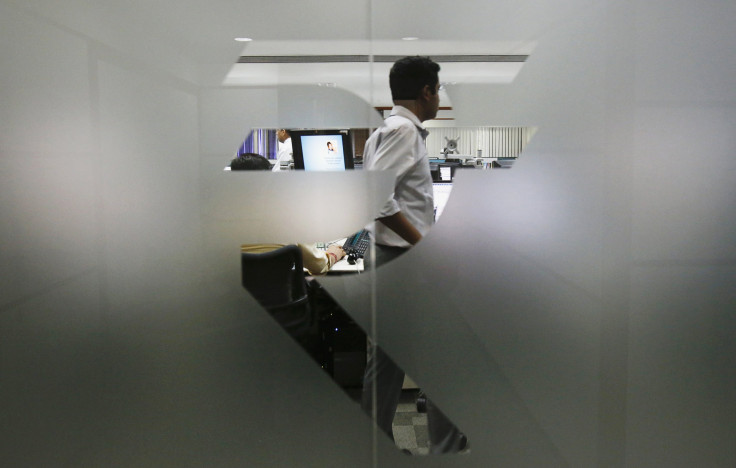Indian Rupee Gains Against Dollar After Reserve Bank Of India Intervenes To Raise Two Key Rates

The Indian rupee, which has fallen almost nine percent so far this year against the dollar, surged 64 paise on Tuesday morning to trade at 59.25, after the Reserve Bank of India, or RBI, stepped in with measures to arrest the recent free fall in the domestic currency.
RBI, on Monday night, raised the Marginal Standing Facility, or MSF, rate and its Bank Rate by 200 basis points each, to 10.25 percent. The MSF is the rate at which banks can borrow money from the central bank against government securities to meet short-term credit needs.
The central bank, in a statement, said that improving domestic liquidity and investors' fears that the U.S. Federal Reserve will wind down its asset-purchase program had made the rupee volatile in recent weeks.
“Countries with large current account deficits, such as India, have been particularly affected despite their relatively promising economic fundamentals. The exchange rate pressure also evidences that the demand for foreign currency has increased vis-a-vis that of the Rupee in part because of the improving domestic liquidity situation,” the bank said in the statement.
The central bank also limited the amount that banks can borrow or lend to 1 percent of a bank’s total deposits, to tighten the liquidity in the economy. The central bank also said it will sell about 120 billion rupees ($2 billion) worth of government securities on Thursday to soak up excess liquidity in the system.
The rupee had hit a record low of 61.21 -- a new low in a series of record lows seen over the past few weeks -- against the dollar on July 8, following widespread negativity in world markets on comments from U.S. Fed officials that the U.S. central bank might begin curtailing its ultra-loose monetary policy sooner than expected.
Reacting to the RBI's measures, India’s Finance Minister P. Chidambaram said that the central bank’s actions should not be taken as a prelude to policy rate changes.
"I don't expect banks to increase interest rates as a result of RBI measures announced yesterday," Chidambaram said, according to an Economic Times report. "Rupee will find its level depending upon foreign exchange we earn and spend."
Analysts believe that the RBI’s latest move to hike short-term rates could further restrict growth in an economy, which grew at 5 percent in the January-March quarter -- its slowest pace in a decade.
"These will come at a heavy cost to the economy as short-end rates will rise and that will make borrowing costlier and affect growth if these measures continue for long," A. Prasanna, economist at ICICI Securities Primary Dealership told Reuters.
However, the deputy chairman of the country's planning commission, Montek Singh Ahluwalia, told a local news channel that the RBI’s short-term measures are intended to curb rupee volatility and that it will not affect long-term rates.
"I would hope that when stability is restored, the RBI will be able to wind out this intervention," Ahluwalia said.
The central bank’s monetary policy review for the April-June quarter is scheduled to be held on July 30 amid calls for interest rate cuts from industry and financial markets to boost sagging growth.
While the Indian rupee gained 64 paise on Tuesday morning from its previous close to trade at 59.25, the Sensex, India's benchmark stock index, fell 1.21 per cent on Tuesday afternoon, in reaction to the RBI's move.
© Copyright IBTimes 2024. All rights reserved.












